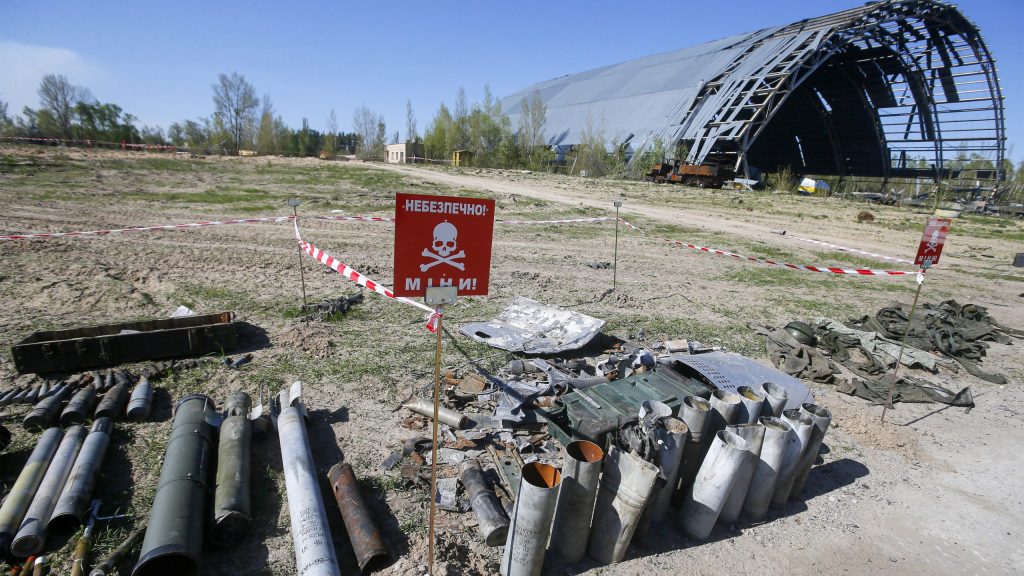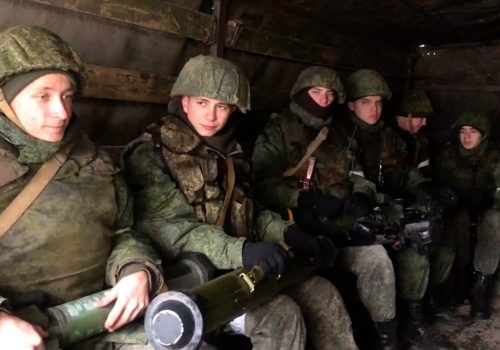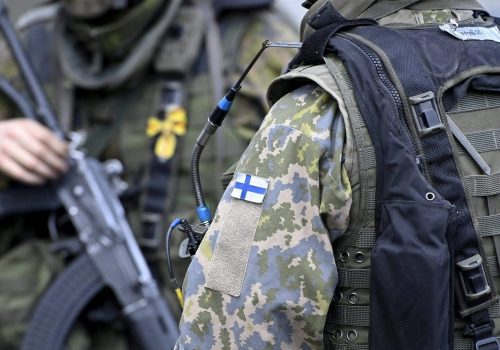The stories are harrowing: Children maimed by mines made to look like toys. Farmers killed in unmarked minefields while tending to their crops, years after a conflict has ended.
Scenes like these helped lead to the 1997 Ottawa Treaty, which bans the use of all non-remote-controlled anti-personnel landmines. Today, 164 nations—including Ukraine and most of NATO—are party to the treaty, which grew out of the International Campaign to Ban Landmines (and earned founder Jody Williams the Nobel Peace Prize).
The document’s restrictions are well-intentioned, but they ignore the legitimate military necessity of anti-personnel mines—one that could help Ukraine repel future invasions.
Consider one of the outliers that didn’t sign the treaty: South Korea, for which anti-personnel mines have been a vital component of its defenses. For seventy years, it has defended itself from another North Korean invasion with a minefield running across the peninsula. This has helped ensure South Korea’s independence, in turn allowing it to grow into a multi-party democracy and economic powerhouse.
Like any other weapon, mines can be misused to harm noncombatants. But unlike various offensive weapons systems that have not been banned, anti-personnel landmines are a defensive weapon when used responsibly. A fenced, marked, and monitored minefield on an international border is only a threat to an invader. It is a passive measure that cannot be used to project power into a neighboring country (unlike jet fighters, tanks, and long-range artillery).
This is why Ukraine should immediately withdraw from the Ottawa Treaty, a move that would allow it to responsibly employ anti-personnel mines as part of an integrated defense on its border with Russia to repel the current invasion and thus help repel future ones. It would still be bound by the restrictions of the 1980 United Nations Convention on Certain Conventional Weapons (CCW), which bans the deliberate targeting of civilians with mines and the use of non-self-destructing and non-self-deactivating anti-personnel mines outside of marked and monitored fenced-in areas. Unlike the Ottawa Treaty, the restrictions in the CCW, which the United States and South Korea have both ratified, are militarily reasonable and humane.
Good fences make good neighbors
There’s already momentum for such a move in another frontline state. In fact, it was Russia’s invasion of Ukraine that prompted a citizens initiative in Finland, which shares an 830-mile border with Russia, to force parliament into reconsidering the country’s membership in the Ottawa Treaty, approved in 2011.
It has become a divisive issue: The five-party government coalition reportedly supports remaining in the treaty, with the four opposition parties favoring withdrawal. Either way, for Finland, which has announced its intention to join NATO, the security guarantee provided by Article 5 on collective defense (and backed up by the US nuclear umbrella) may render the land mine question less pressing.
But Ukraine, whose membership in the Alliance appears further away than ever, is unlikely to enjoy that luxury. The country needs more lethal measures to deter future Russian aggression—especially since its failure to complete an ambitious project to fortify its 1,200-mile border with Russia with anti-tank ditches, fences, and other obstacles before the February invasion.
So what would a responsible anti-personnel mine policy look like for Ukraine?
If the Ukrainian military can successfully expel Russian forces in the current war, it should complete its planned border wall—perhaps as part of an internationally aided reconstruction effort—and augment it with anti-tank and anti-personnel mines. To follow the CCW and ensure maximum civilian safety, any Ukrainian minefields should be fenced on both the Ukrainian and Russian sides with clear markings in all local languages, subject to round-the-clock electronic monitoring and frequent manned patrolling.
First, Ukrainian authorities need to complete a detailed topographic analysis of the territory, then organize consultations with military commanders as to the best options: a continuous mine barrier along the entire border, or one focused on crucial terrain that channels potential invading forces onto the ground of Ukraine’s choosing. The key is to trust the experts: Ukrainian military commanders have proved their mettle, and the government should defer to their judgment.
As for whether a minefield of that size is possible, Morocco has already answered that question: The Western Sahara Wall (or “Berm”) was built by the Moroccan government in the 1980s, shortly after it annexed neighboring Western Sahara following Spanish occupation, to keep independence-seeking Sahrawi insurgents away. At approximately 1,700 miles, it constitutes the longest minefield in the world.
The time is now
When Russia invaded Ukraine in February, an early spring thaw rendered the terrain muddy and impassable to armor, forcing its troops to operate on paved roads in long, exposed columns. The Russians were overconfident and believed they could speed to victory—even though their multiple axes of advance were not mutually supportive of one another—and Ukrainian defenders outnumbered them.
The Kremlin is unlikely to make the same mistakes again. In any future engagement, Russia will likely attempt to attack with more forces and avoid bottlenecked roads for an expansive overland invasion. But intelligent and responsible use of anti-personnel landmines by Ukraine would make that option deadly, too.
Col. John B. Barranco is the 2021-22 senior US Marine Corps fellow at the Atlantic Council’s Scowcroft Center for Strategy and Security. The positions expressed do not reflect the official position of the United States Marine Corps or the Department of Defense.
Further reading
Mon, Mar 21, 2022
What’s behind Russia’s logistical mess in Ukraine? A US Army engineer looks at the tactical level.
New Atlanticist By Ann Marie Dailey
By obscuring its true goal from troops on the ground, Russia’s leadership made the military's difficulties exponentially worse.
Wed, Apr 6, 2022
Zelenskyy wants Ukraine to be ‘a big Israel.’ Here’s a road map.
New Atlanticist By Daniel B. Shapiro
By adapting their mindset to mirror aspects of Israel’s approach to security challenges, Ukrainian officials can tackle their own critical challenges with confidence.
Fri, May 13, 2022
Why Finland and Sweden can join NATO with unprecedented speed
New Atlanticist By Christopher Skaluba, Anna Wieslander
Both have put in the prescient and painstaking work to make a potential transition from partner to member so straightforward.
Image: A warning sign (reading "Danger! Mines!") is planted at the Hostomel Airfield outside Kyiv, Ukraine, on May 5, 2022. Photo by Pavlo Gonchar / SOPA Images/Sipa USA/REUTERS




